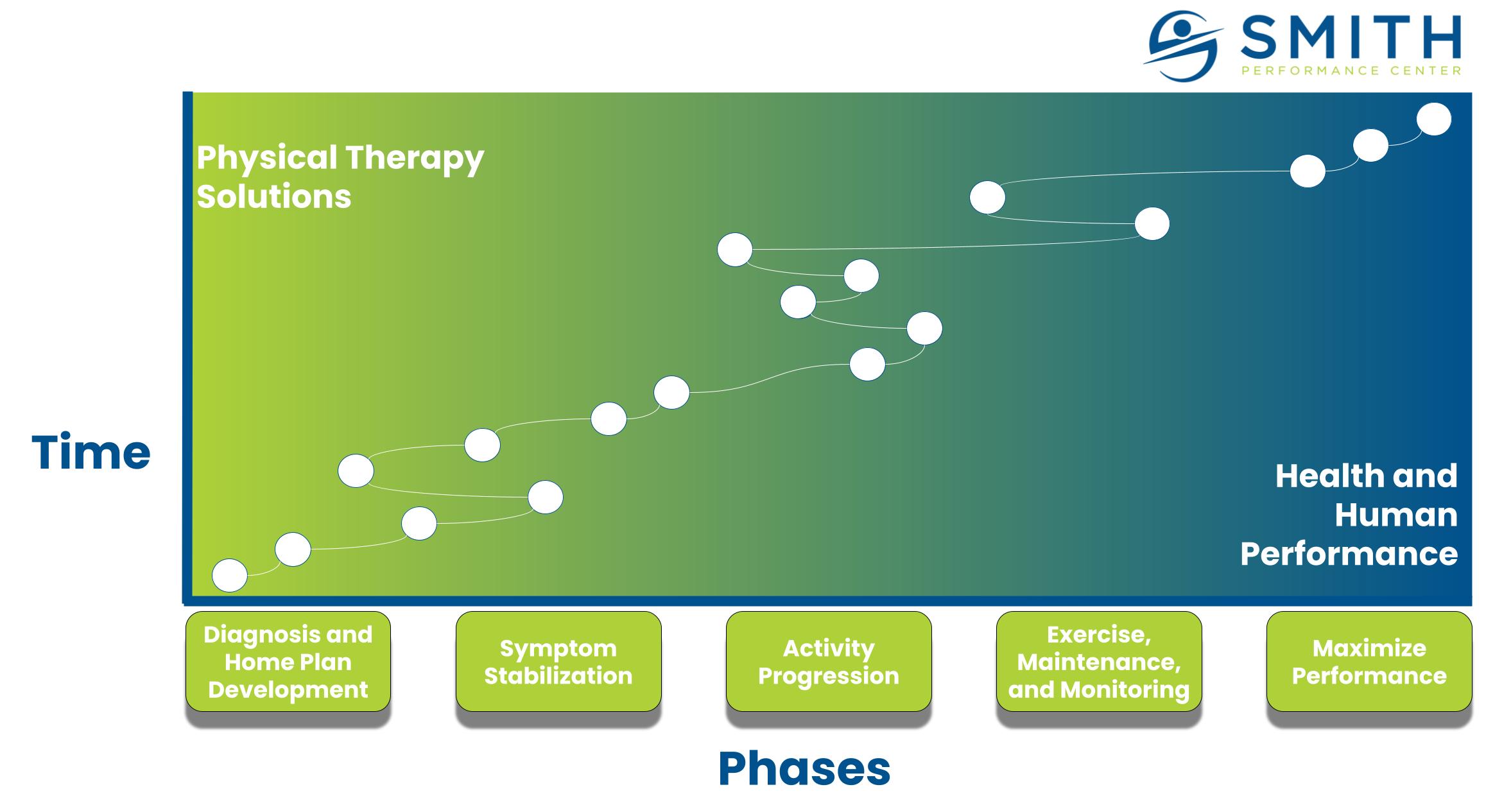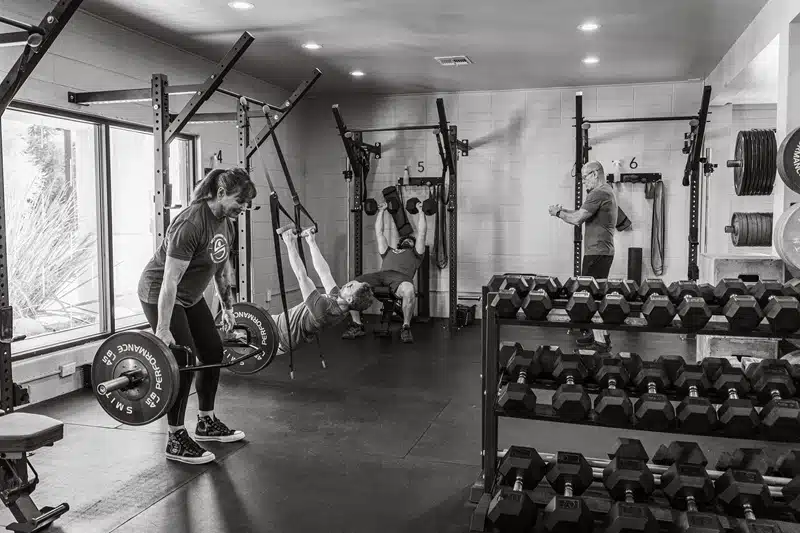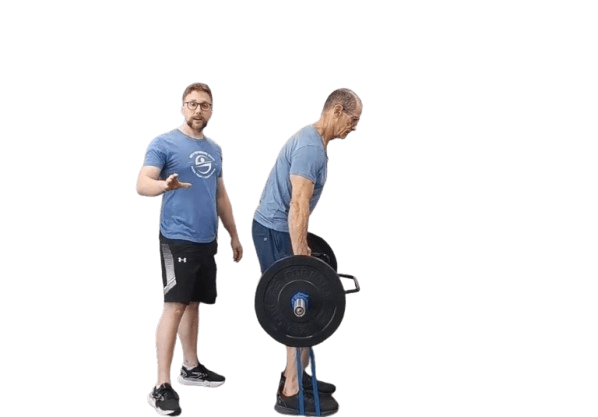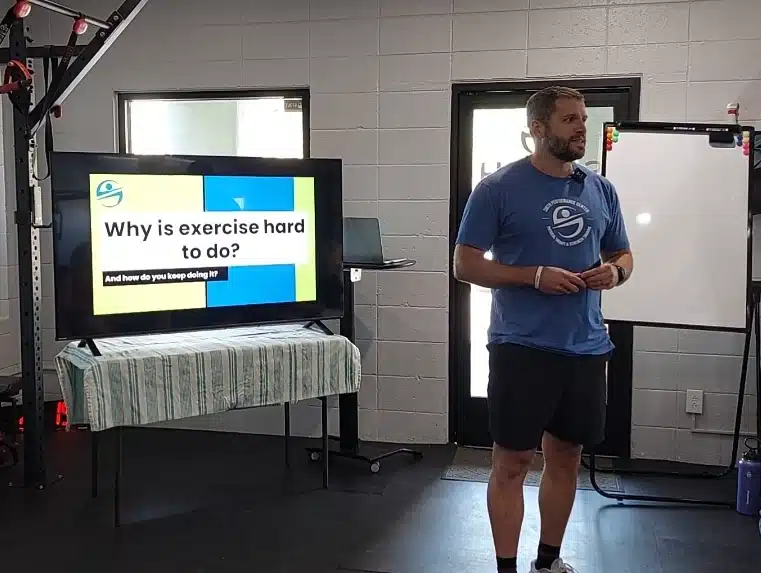There are numerous modifiable variables in an exercise program that you can use to improve your workout experience, increase effectiveness, and make the workout more fun.
A Modifiable Variable is anything you can manipulate in a workout program (which is literally everything) to change the challenge. It includes exercise choice, movement patterns, exercise pool, alternative exercises available, sets, reps, intensity, rest breaks, prep exercises, warm-up, exercise order, recovery activity, support exercises based on body response, and workout frequency. Our Team believes the most important initial modifiable variable is exercise choice, which is often not used well. This is one of the reasons we start with a movement assessment. But all of these variables are important and have a huge impact on your experience and the likelihood of success with developing an exercise habit.
Our team targets these variables beginning in activity progression and it remains a critical aspect of training through the next two – exercises and maximizing performance.
Today, we want to give you a list of variables that we use to build the programming at SPC and ones you can explore yourself if you are at SPC or a different facility.
The 5 Modifiable Variables For Programming A Great Workout and Program
The modifiable variables that you want to initially consider are:
- Intensity
- Sets And Reps
- Rest Intervals
- Frequency Of Workouts
- Supersets
Intensity
This is all about how hard you are working out the muscles during a given set.
You can make mistakes by going too hard or too easy. It is actually one of the most difficult aspects of training, so it’s useful to actually monitor how you rate the intensity during your workouts. There are two tools that we use to measure intensity.
- Rate of Perceived Exertion(RPE) – How much effort you feel like you are giving during an exercise set
- Repetitions in Reserve (RIR) – How many repetitions you have left before failure or exercise technique breakdown
We program recommendations for these numbers on the top of a workout set.
If you are new, it is likely that you will do better with RPE because it takes time to learn how many reps you could do before failure. If you are coming back from an injury, the intensity needs to be set at a point where you have a good response, not at the point where it feels hard. Intensity mistakes are very easy for those who have a significant training history and are trying to build their fitness back up after they finish physical therapy.
Sets And Reps
You can consider the sets and reps for a single exercise, a combination of exercises, and a full workout.
You may also see this written up as volume. Multiply sets and reps together and you have the volume performed in a workout. Sets and reps along with rest breaks also give you the total time the workout should take. When combined with the intensity, you have the load and impact on the body.
The same mistakes in overloading the tissue capacity happen when sets and reps are not modified to make sure you have a good response. It’s better to undershoot initially than overshoot. We also want to manipulate this from one workout to the next in conjunction with intensity to improve the stimulus to the body.
Rest Intervals
Rest intervals are the time between the sets or supersets you perform.
We make it easy in our programming and have a timer come up telling you to rest. Rest intervals allow your body to recover based on the adaptation we want to have. Sometimes we want to have you still tired at the start of the next set, while at other times, we want full recovery for maximal effort.
Two common mistakes happen during the rest interval: you take way too much time between sets or you take no time and hammer the next set.
This may be the hardest initial modifiable variable to stick with during a workout because it requires monitoring and can be influenced by others (people striking up a conversation) or time constraints (showing up late and needing to get to work). The key is to take time between sets to recover for another good effort. If you are looking more for strength gains, take longer breaks. Think 2-3 minutes. For more strength endurance, reduce to one minute to 90 seconds.
Supersets
Supersets are a useful modifiable variable to increase efficiency in a workout.
If you perform 2 or more exercises in a sequence before taking a rest break, this is a superset. So instead of doing one exercise at a time, you do multiple. There is a cardiovascular effect and depending on the type of exercises chosen, you may target a different training stimulus.
Workout Frequency
The frequency variable is how often you do a workout.
You may do 2 workouts or up to 6 workouts a week. An important consideration here is the purpose of the workouts in your overall goals. If the primary goal is supportive – meaning you do it to support another activity like running or biking – then reduced frequency is better. 2 workouts per week that help maximize the performance in your main activity is the key.
Two big mistakes occur in workout frequency: too many workouts and inconsistency with workouts.
Too many workouts happen to the experienced exerciser who is new to lifting and to the highly motivated inexperienced exerciser. The experienced exerciser often fails because they have a higher level of fitness, but it is specific to their normal activity. Their expectation that lifting will be tolerated in the same fashion is not accurate. We see issues of severe delayed onset muscle soreness and complete cessation of lifting as a common consequence. The new exerciser is highly motivated. That motivation is great initially but when it wears off, they cannot fall back on an exercise habit. Starting out at 6 workouts a week is not realistic for long-term success. The second issue, inconsistency, is the killer of success.
You will be more successful if you think of workout frequency as the exercise habit you are trying to develop.
What do you need to do with all of this information?
We consider each of these variables in our programming.
The set and rep scheme is based on what adaption you want to make in your body. We even throw variable supersets versus single sets to get a different training stimulus.
Here is what we want you to take away from this:
- Don’t worry about intensity, rep ranges, or any variables until your form is correct and you give your body time to develop tissue capacity.
- Soreness is not a barometer of an effective workout. You should hover around a soreness of zero to maybe 4 out of 10. You should not feel terrible or like someone beat you with a stick.
- Workouts should not hurt nor cause you to hurt later. You can use the modifiable variables above to make sure this does not happen.
- The intensity is completely on you, how it feels, and how your body responds post workout – don’t feel pressure to do more until your body tells you that you are ready.
- Workout frequency is about developing an exercise habit first and training effect second.
Do you struggle with maintaining an exercise routine?
Let us help you develop an exercise routine that can work even with a busy schedule.








